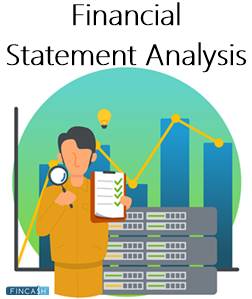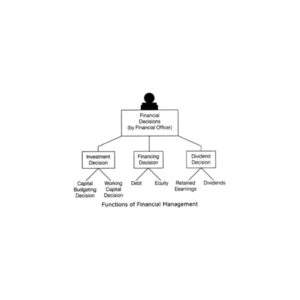

Table of Contents
ToggleWhat are the different types of financial transactions and its effects to the assets, liabilities, and owners equity?
Financial transactions are the backbone of any business’s accounting system. These transactions impact a company’s financial statements, affecting its assets, liabilities, and owner’s equity. Understanding these effects is crucial for accurate financial reporting and analysis.
Types of Financial Transactions
-
Revenue Transactions
Definition: Revenue transactions involve earning income through business activities, such as sales of goods or services.
Effects:
- Assets: Typically increases assets, such as cash or accounts receivable.
- Liabilities: Generally has no direct effect on liabilities.
- Owner’s Equity: Increases owner’s equity as revenue contributes to retained earnings.
Example: A company sells products worth $5,000 on credit. This transaction increases accounts receivable (asset) and increases revenue, which eventually boosts owner’s equity through retained earnings.
-
Expense Transactions
Definition: Expense transactions occur when a business incurs costs necessary to generate revenue, such as rent, utilities, or salaries.
Effects:
- Assets: Reduces assets, such as cash or accounts payable if the expense is paid immediately.
- Liabilities: Increases liabilities if the expense is not yet paid (e.g., accounts payable).
- Owner’s Equity: Decreases owner’s equity as expenses reduce net income, which reduces retained earnings.
Example: A company pays $1,000 for utilities. This transaction reduces cash (asset) and increases expenses, which decreases owner’s equity through reduced retained earnings.
-
Capital Transactions
Definition: Capital transactions involve investments made by the owners or shareholders in the company or withdrawals from the company.
Effects:
- Assets: Increases assets if owners invest cash or assets into the business.
- Liabilities: Generally has no direct effect on liabilities.
- Owner’s Equity: Increases owner’s equity with additional capital contributions or decreases it with withdrawals.
Example: An owner invests $10,000 in cash into the business. This increases cash (asset) and increases owner’s equity through additional capital.
-
Loan Transactions
Definition: Loan transactions involve borrowing money from external sources.
Effects:
- Assets: Increases assets, such as cash or bank balances, when the loan is received.
- Liabilities: Increases liabilities as the company now owes money to lenders.
- Owner’s Equity: No immediate effect on owner’s equity, but interest payments on the loan will impact net income and retained earnings.
Example: A company takes out a $20,000 loan from a bank. This increases cash (asset) and increases loans payable (liability).
-
Purchase Transactions
Definition: Purchase transactions involve acquiring goods or services, which may be paid for immediately or on credit.
Effects:
- Assets: Increases assets like inventory or fixed assets if purchased on credit or cash.
- Liabilities: Increases liabilities if purchased on credit (accounts payable).
- Owner’s Equity: Generally no immediate effect on owner’s equity, but impacts it indirectly through changes in net income due to the associated expenses.
Example: A company buys office equipment worth $3,000 on credit. This increases office equipment (asset) and accounts payable (liability).
-
Dividend Transactions
Definition: Dividend transactions involve distributing earnings to shareholders.
Effects:
- Assets: Reduces assets as cash is distributed to shareholders.
- Liabilities: Increases liabilities when dividends are declared but not yet paid.
- Owner’s Equity: Decreases owner’s equity as retained earnings are reduced by the amount of dividends.
Example: A company declares and pays $2,000 in dividends. This reduces cash (asset) and reduces retained earnings (owner’s equity).
-
Depreciation Transactions
Definition: Depreciation transactions allocate the cost of a fixed asset over its useful life.
Effects:
- Assets: Reduces the book value of fixed assets.
- Liabilities: No direct effect on liabilities.
- Owner’s Equity: Decreases owner’s equity as depreciation expense reduces net income and retained earnings.
Example: A company records $500 in depreciation for machinery. This reduces the book value of machinery (asset) and reduces retained earnings through depreciation expense.
- Interest Transactions
Definition: Interest transactions involve payments made for borrowed funds or interest earned on investments.
Effects:
- Assets: Increases if interest is earned (e.g., interest receivable) or decreases if interest is paid (e.g., cash).
- Liabilities: Increases if interest is payable and has not yet been paid.
- Owner’s Equity: Affects owner’s equity indirectly through net income, as interest expenses reduce net income and retained earnings.
Example: A company pays $200 in interest on a loan. This reduces cash (asset) and increases interest expense, which decreases retained earnings.
- Inventory Transactions
Definition: Inventory transactions involve the purchase or sale of goods for resale.
Effects:
- Assets: Increases inventory (asset) when purchased and reduces it when sold.
- Liabilities: Can increase if purchased on credit (accounts payable).
- Owner’s Equity: Affects owner’s equity through changes in net income as inventory sales affect revenue and cost of goods sold.
Example: A company purchases $4,000 worth of inventory on credit. This increases inventory (asset) and accounts payable (liability).
- Write-Off Transactions
Definition: Write-off transactions involve removing uncollectible assets or expenses from the books.
Effects:
- Assets: Reduces assets, such as accounts receivable, when writing off bad debts.
- Liabilities: Generally no effect on liabilities.
- Owner’s Equity: Decreases owner’s equity as write-offs affect net income and retained earnings.
Example: A company writes off $1,000 in uncollectible accounts receivable. This reduces accounts receivable (asset) and increases bad debt expense, which decreases retained earnings.
Conclusion
Different types of financial transactions have distinct effects on a company’s assets, liabilities, and owner’s equity. Understanding these effects is vital for accurate financial reporting and analysis. By comprehensively tracking and analyzing these transactions, businesses can better manage their financial health and make informed decisions.
FAQs:
- What is a revenue transaction?
A revenue transaction involves earning income from sales or services, increasing assets and owner’s equity. - How do expense transactions affect financial statements?
Expense transactions decrease assets (or increase liabilities) and reduce owner’s equity by lowering net income. - What are capital transactions?
Capital transactions involve investments by owners or withdrawals, increasing assets and owner’s equity with additional capital or decreasing equity with withdrawals. - How does a loan transaction impact financial statements?
A loan increases assets (cash) and liabilities (loan payable), with no immediate effect on owner’s equity. - What happens to assets and liabilities in a purchase transaction?
A purchase increases assets (e.g., inventory) and, if bought on credit, increases liabilities (e.g., accounts payable). - How do dividend transactions affect financial statements?
Dividend transactions reduce assets (cash) and decrease owner’s equity by reducing retained earnings. - What is the effect of depreciation transactions?
Depreciation reduces the book value of fixed assets and decreases owner’s equity by affecting net income. - How do interest transactions impact financial statements?
Interest transactions affect assets (e.g., cash if paid, interest receivable if earned), liabilities (interest payable), and owner’s equity (through net income). - What effect do inventory transactions have?
Inventory transactions increase assets (inventory) when purchased and decrease them when sold, with impacts on revenue and cost of goods sold. - How does writing off bad debts affect financial statements?
Writing off bad debts reduces assets (accounts receivable) and decreases owner’s equity through increased bad debt expense.

For further details access our website https://vibrantfinserv.com/